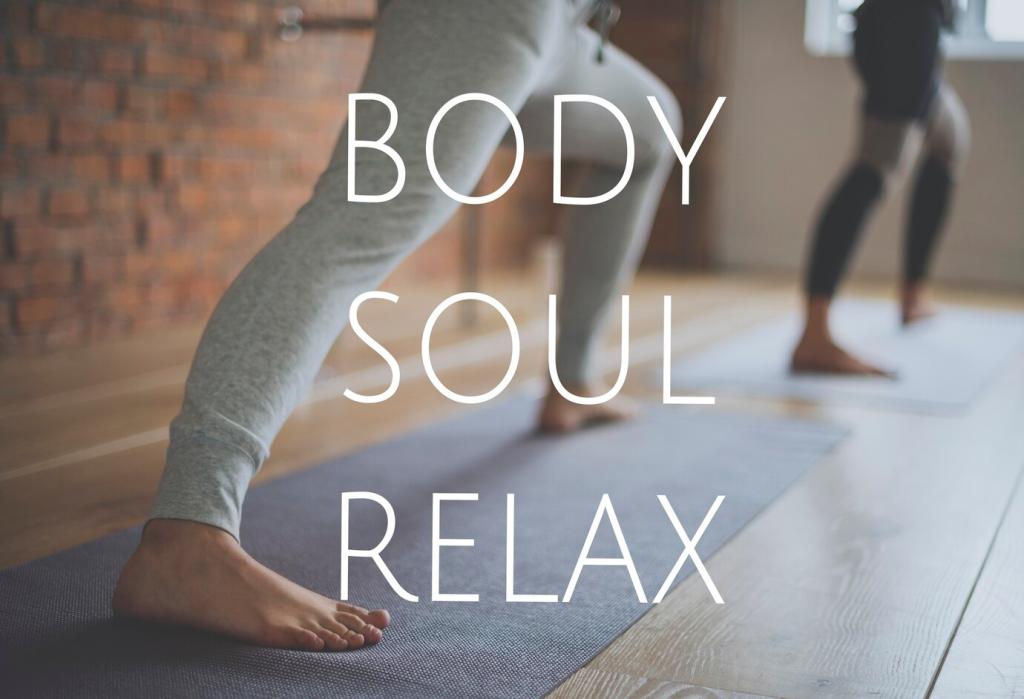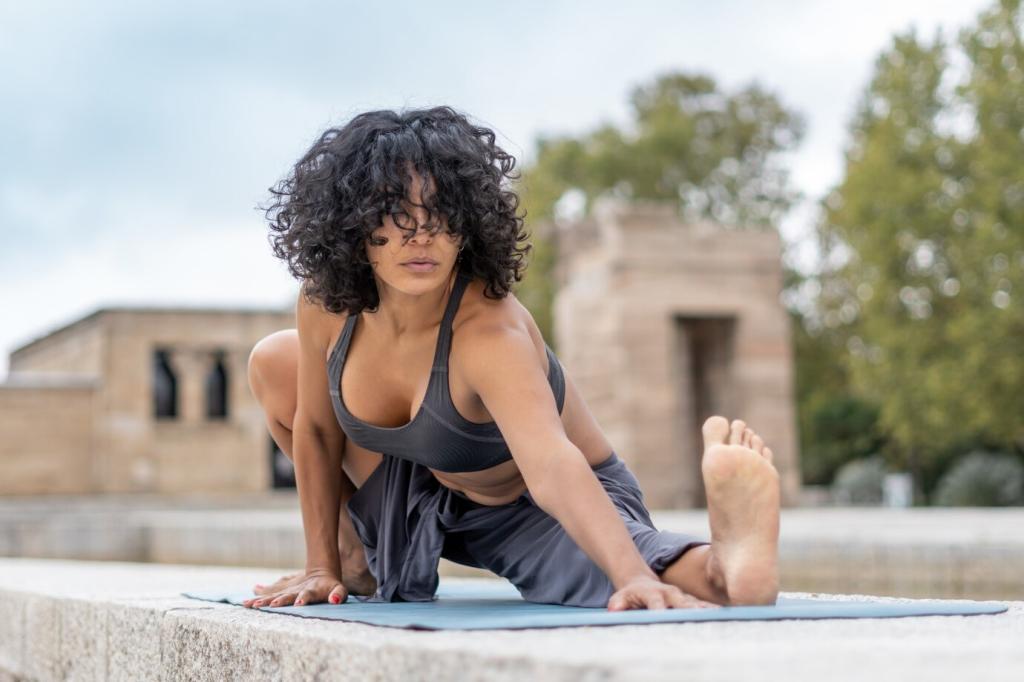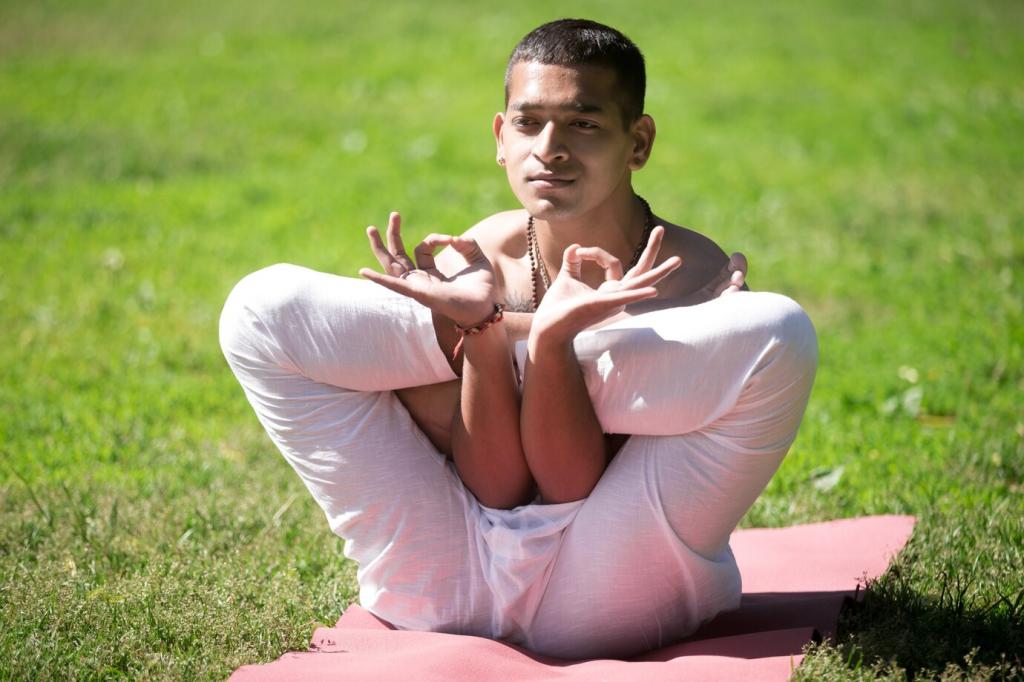Stronger, Calmer, Faster: Integrating Meditation into Your Fitness Routine
Why Meditation Belongs in Your Training Plan
Deliberate breathing stimulates the vagus nerve, nudging your nervous system toward calm focus. That shift lowers perceived effort, steadies pacing, and improves attention—crucial for heavy lifts, long runs, and technical drills alike.
Why Meditation Belongs in Your Training Plan
Meditation sharpens interoception, helping you feel subtle cues like tension, alignment, and fatigue. With better body awareness, you recruit muscles more efficiently, refine technique, and reduce injury risk during challenging sessions.


Pre-Workout Centering Rituals
Inhale four counts, hold four, exhale four, hold four—repeat for two minutes. This steady rhythm anchors attention, calms nerves, and sets a reliable mental cue: now we train with purpose.


Pre-Workout Centering Rituals
Close your eyes for sixty seconds. See your first set, pace, or opening kilometer unfold smoothly. Visual rehearsal improves coordination, confidence, and consistency—like walking a path before you run it.
Mindful Strength and Conditioning
Breathing the Rest Interval
Between sets, sit tall and count ten smooth breaths. Scan shoulders, jaw, and grip. This quick reset reduces unnecessary tension so your next set is cleaner, safer, and often stronger.
Tempo, Breath, and Power
Match exhale with exertion. Slow eccentrics while maintaining a calm gaze. When tempo, breath, and movement align, power feels more controlled and repeatable, especially during compound lifts and kettlebell flows.
HIIT Without the Head Noise
During intense intervals, anchor to a steady keyword—“light,” “drive,” or “smooth.” A single word prevents mental clutter, helping you hold output without spiraling into fatigue-driven negativity.

Endurance Flow: Running, Cycling, and Swimming
Cadence Breathing for Runners
Try a 3:2 pattern—inhale for three steps, exhale for two—adjusting as pace changes. This sync helps distribute impact stress, smooths cadence, and gives your mind a gentle metronome to follow.
Cycling Focus Points
Every five minutes, rotate attention: breath, hips, hands, road. This sequence keeps posture tidy, effort even, and mind engaged, so climbs feel purposeful rather than punishing.
A Swimmer’s Quiet Lane
Coach Luis asked athletes to silently label strokes: “reach, anchor, glide.” The mantra replaced mid-set anxiety, and lap times evened out as panic gave way to patient, efficient pulls.
Recovery Rituals That Actually Stick
Lie down or sit. Starting at your feet, scan upward for tightness. Breathe into each hotspot for two cycles. This post-session practice aids relaxation and reveals patterns you can address tomorrow.

Measure What Matters
Note perceived exertion and breath smoothness after each set or interval. Over time, you’ll spot patterns—like choppy breathing predicting overreaching—letting you dial training before fatigue snowballs.
Measure What Matters
Pair short reflections with morning HRV. If low scores match restless thoughts, prioritize calming breathwork. When both rise, consider progressive overload. Data plus self-awareness beats data alone.


Build Your Mindful Training Community
Partner Breathing and Set Cues
Before a heavy lift, partners take three synchronized breaths and exchange one concise cue. This shared focus fosters safety, trust, and performance under pressure.
The 21-Day Breath Habit
Join our 21-day micro-meditation challenge: two minutes before, one minute between, two minutes after. Subscribe for reminders, and report progress weekly to stay accountable together.
Share Your Story, Shape the Next Post
Tell us how you integrated meditation into a workout—what shifted, what surprised you, what you’ll keep. Your stories guide future articles and help newcomers find their starting line.
